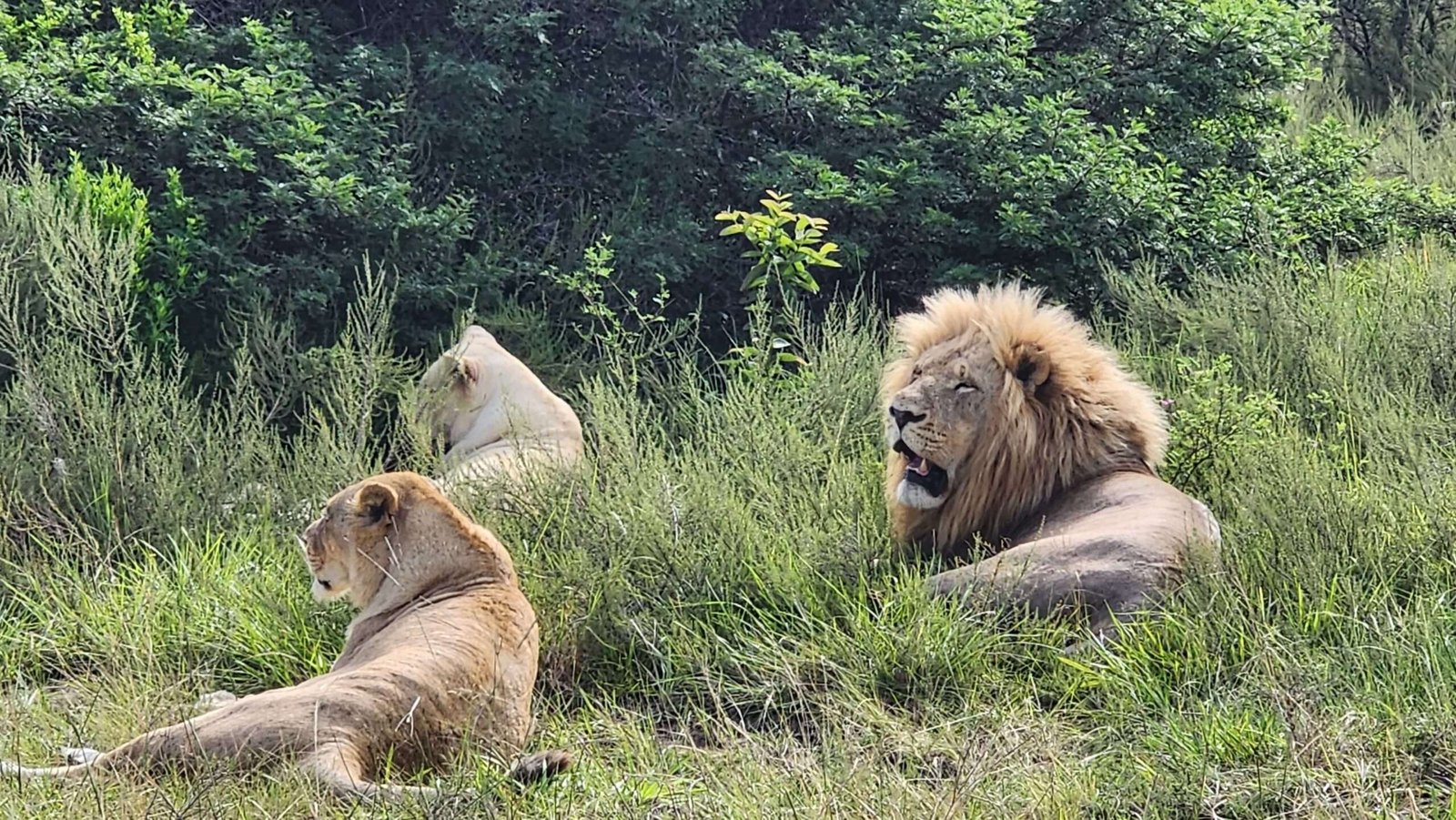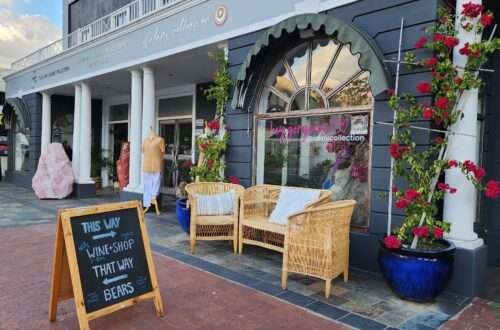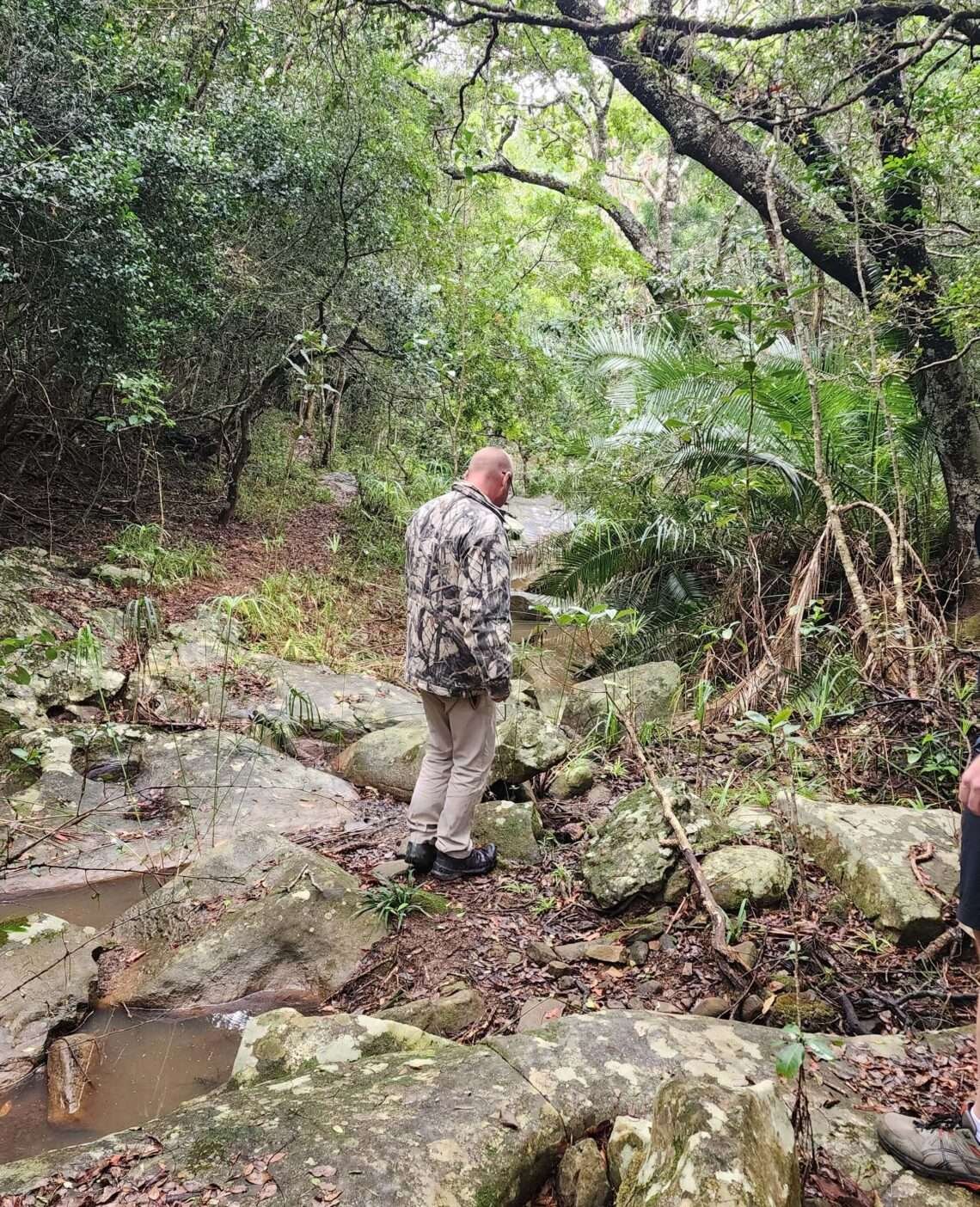
Umtiza Forest Walk at Inkwenkwezi: What to Expect
Inkwenkwezi Private Reserve , situated in the Eastern Cape Province of South Africa, covers an expansive area of around 100 square kilometers. Abundant in diverse plant and animal species, the reserve is home to a unique and precious ecosystem – the Umtiza Forest. The forest has one of the remaining three known populations of Umtiza trees, scientifically referred to as Umtiza Listerina. We had a fantastic experience on the Umtiza Forest Walk at Inkwenkwezi and the purpose of this blog post is to tell you all about it and what to expect on your walk!
The Cultural Importance of the Umtiza Tree
Revered by the Xhosa people, the Umtiza tree holds deep meaning as a sacred force, believed to have the ability to ward off evil spirits. A longstanding tradition among the Xhosa involves hanging a strip of bark above their doorways, using the tree’s power to guard against lightning. The Umtiza tree’s slender branch is believed to possess unique healing powers. Furthermore, due to the Umtiza tree’s robust and oily wood, Settlers in the past utilized it as an excellent lubricant for items such as propeller shafts and components of ox wagons.
The decline of the Umtiza Tree
Unfortunately, people extensively cut down the Umtiza tree in the past due to its useful and traditional qualities. In addition, the growth of human settlements and development resulted in widespread deforestation of these trees as well. Consequently, in 2001, the Umtiza tree was rightfully added to the protected species list to secure its existence for the coming generations. Despite this worrying situation, a ray of hope shines at Inkwenkwezi, where more than 300 of these splendid trees can be seen thriving in a small one-hectare area.
The Umtiza forest walk at Inkwenkwezi
We hopped on the Land Rover from the main reception area at Inkwenkwezi. Within 5-10 minutes, we were at the Umtiza Forest entrance. Our guide, led the way through the bush, saving us from any confusion as the entrance isn’t actually marked as such.
Weathered rocks along the way…
As you start the trail, it’s a 5 minute walk along natural paths to a rocky riverbed. You’ll spot something interesting – almost perfect circular holes in the rocks. It’s a neat trick of nature: small stones get stuck in bigger rocks, and as water flows, they spin around, slowly shaping the rocks into these cool circles. In fact, it’s the same thing you can see at Bourkes Luck Potholes on South Africa’s Panorama Route.
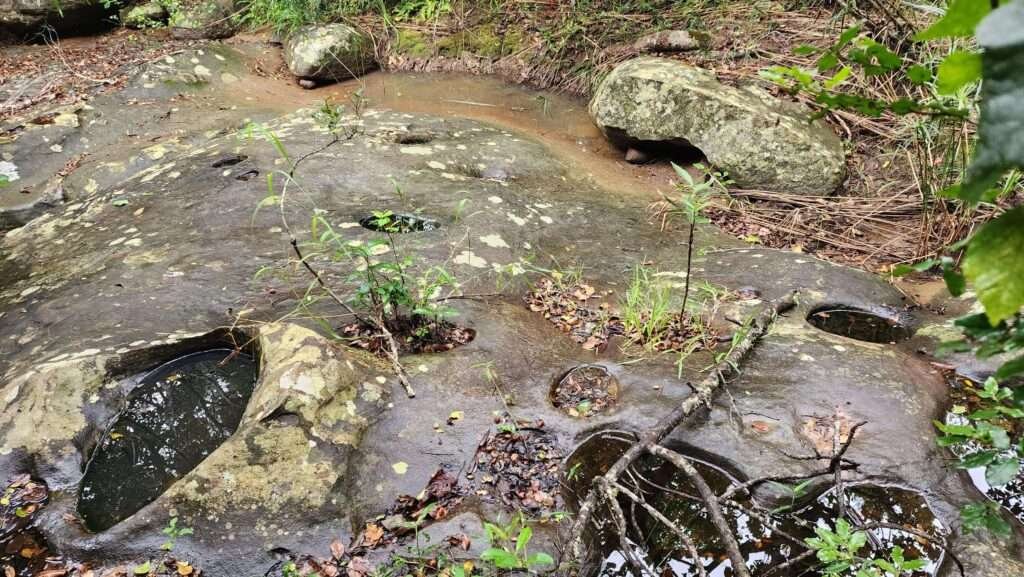
Medicinal and traditional uses of the plants in the Umtiza Forest
Walking along a narrow trail, our guide shared tales of how the forest plants were used traditionally and for medicine. It was fascinating to learn about the many ways these plants have been part of people’s lives for generations.
The riverside Euphorbia
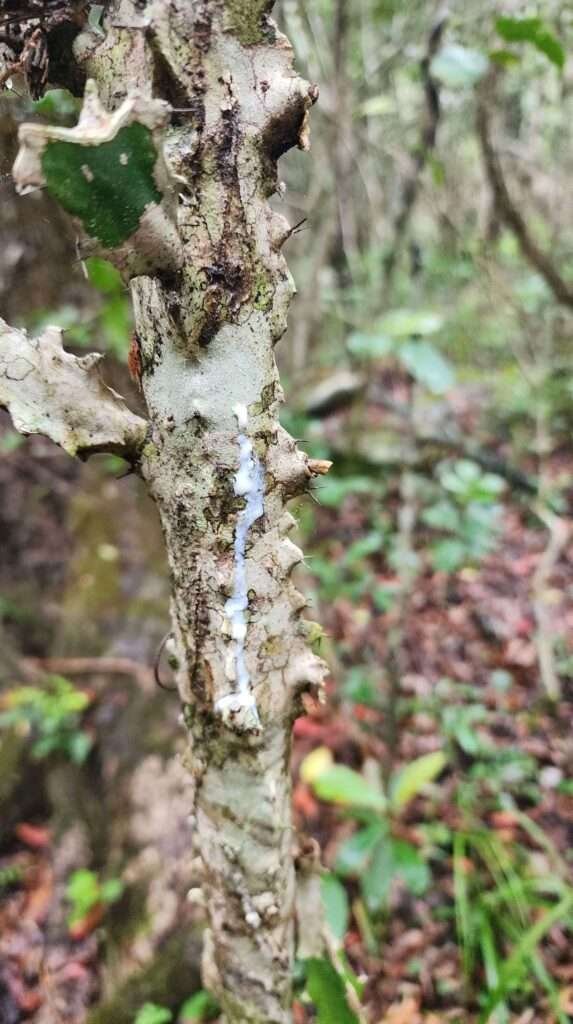
While walking, we found a pretty tree that served many interesting purposes. Our guide cut the tree, and we were surprised to see a poisonous milky liquid coming out. Turns out, this toxic sap was used for making hunting arrows. It could take down the animal but not spoil the meat. As a result, the sap was very useful for hunters.
We also found out that you had to be careful with the sap because it could irritate your eyes. But here’s the interesting part: the sap had another use. Back in the day, if you poured it into small water bodies, then it would suck up all the oxygen. Subsequently, the dead fish floated to the surface. It was a clever way for fishermen to catch fish, although nowadays, it’s illegal.
Travelers Palm
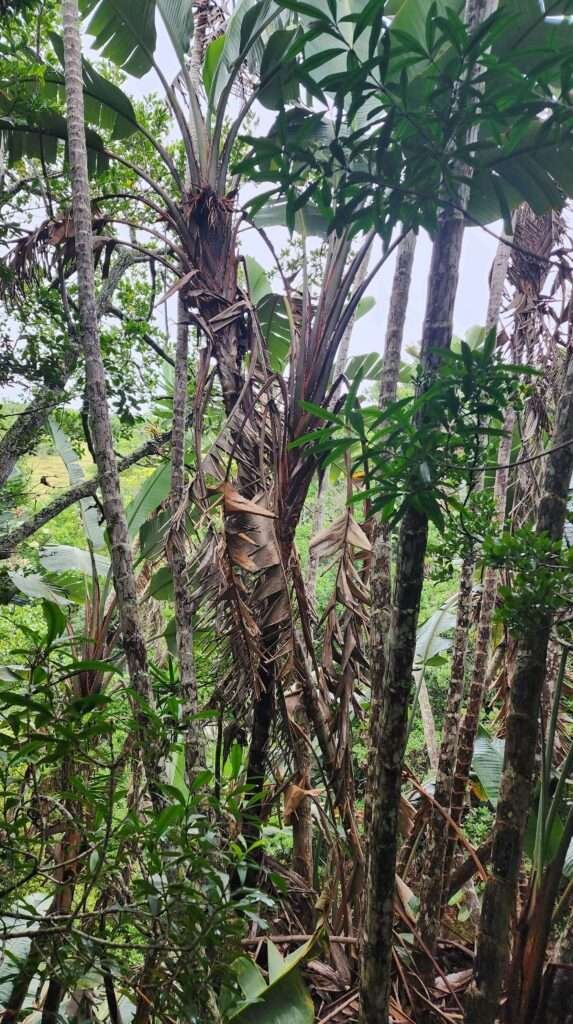
We then came across yet another tree with a fascinating purpose! Its name comes from the crucial job it does – providing drinking water for tired travelers in emergencies. This amazing tree has big leaves that look like bananas, perfect for both collecting and storing water. So, if you find yourself lost in a forest and desperate for water, this tree could be your lifesaver.
The Corkwood Tree
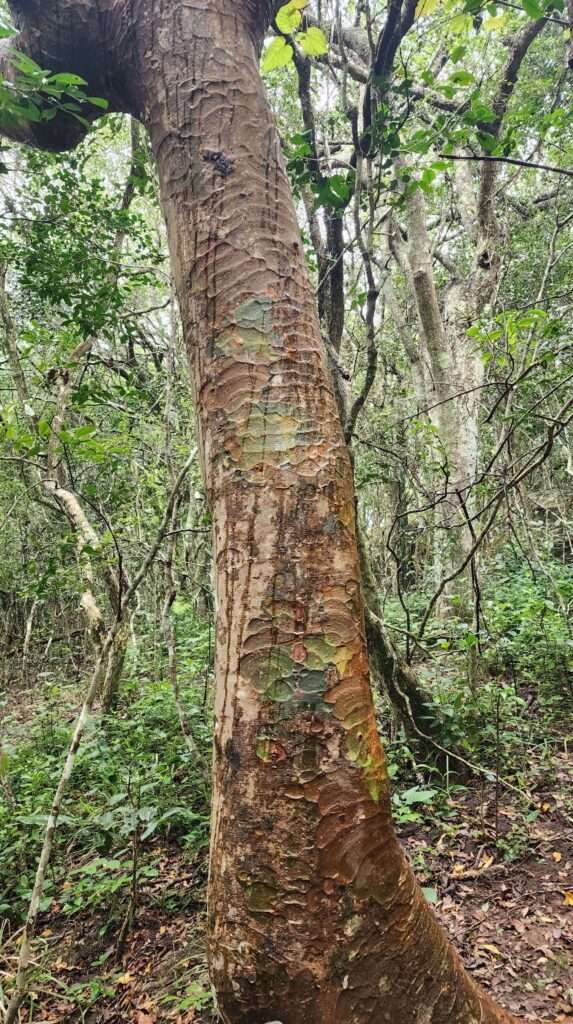
The Corkwood tree, scientifically known as Commiphora harveyi, stands out with its unique feature. It has thin, papery bark that peels off in large, bronze-hued flakes. When you touch the surface of this cork tree, you’ll feel a noticeable change in temperature compared to the nearby surroundings. This is because of the impressive water-holding ability of the Corkwood’s stem, giving it a distinct coolness to the touch.
Moreover, the corkwood tree is a hardy species as it can grow in tough places where other trees might struggle. This makes it an important water source for lots of animals. These smart creatures make holes in the tree’s bark to get to the water stored inside the stem. By doing this, they cleverly access a natural water supply to stay hydrated and survive in challenging environments.
The Wildlife in the Umtiza Forest
Even though it’s not very big, the Umtiza forest is home to various animal species. As you explore, you might spot different birds, insects, snakes, or even small mammals like mice
The Veniliodes cycad eating moth
Another species to be on the lookout for is the Veniliodes cycad eating moth, which has recently been discovered in the forest. This moth species is quite rare, with only four known populations remaining in South Africa, and the Umtiza forest is fortunate to be one of their habitats. These unique moths have a special relationship with the Stangeria Cycad, a plant that thrives abundantly within the Umtiza forest. The cycad serves as their primary source of food, so the forest is a crucial refuge for their survival.
Bird Species
We didn’t see them, but there are lots of birds in the forest. However, look out for the hard-to-find Knysna Turaco and Narina Trogon. They’re a bit shy, but if you pay attention, you might catch a glimpse or hear their beautiful calls.
From the Umtiza forest back to Reception
On our way back to the reception, we were lucky to come across some interesting sights.
Termites, the architects of Inkwenkwezi
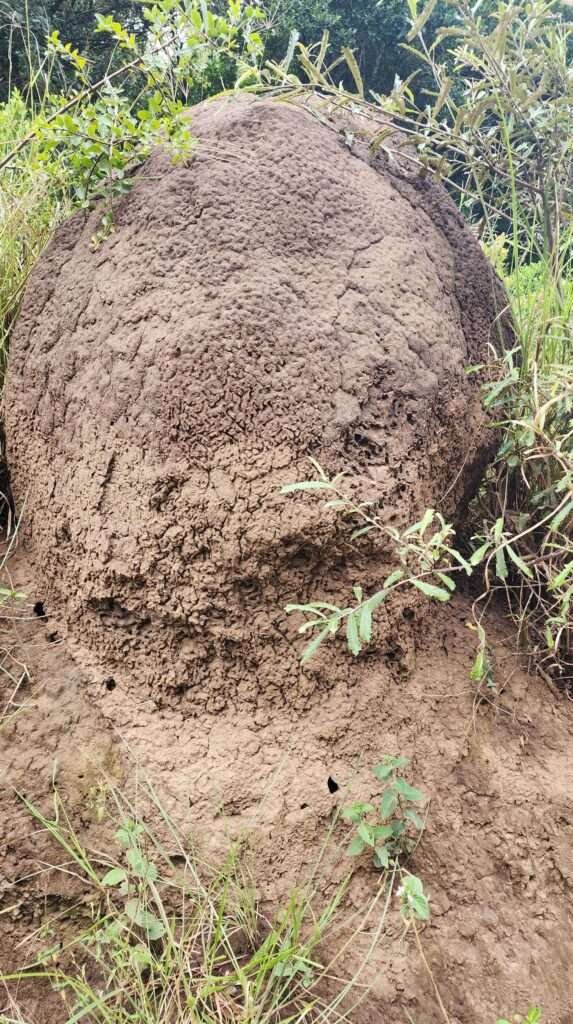
This mound building termite species is found in Africa, Australia, and South America. If you gently tap the surface of the mound, you’ll notice it’s very sturdy. The structure forms a solid, hard dome similar to concrete. However, inside, there are tunnels and shafts, creating a complex network. Most of the mound is actually underground, like an iceberg. What you see above ground is just a small part of the termites’ intricate system of tunnels and colonies. Termites are detritivores, meaning they eat dead organic matter, which is important for the ecosystem.
A Special Fruit
Our guide found a fruit on the ground known as ‘starfruit’ or ‘monkey fruit’. This thin and glossy fruit got its name from its star-shaped appearance, and it’s a favorite among monkeys. When the fruit ripens, its delicious flesh becomes a treat not just for monkeys but also for us humans!
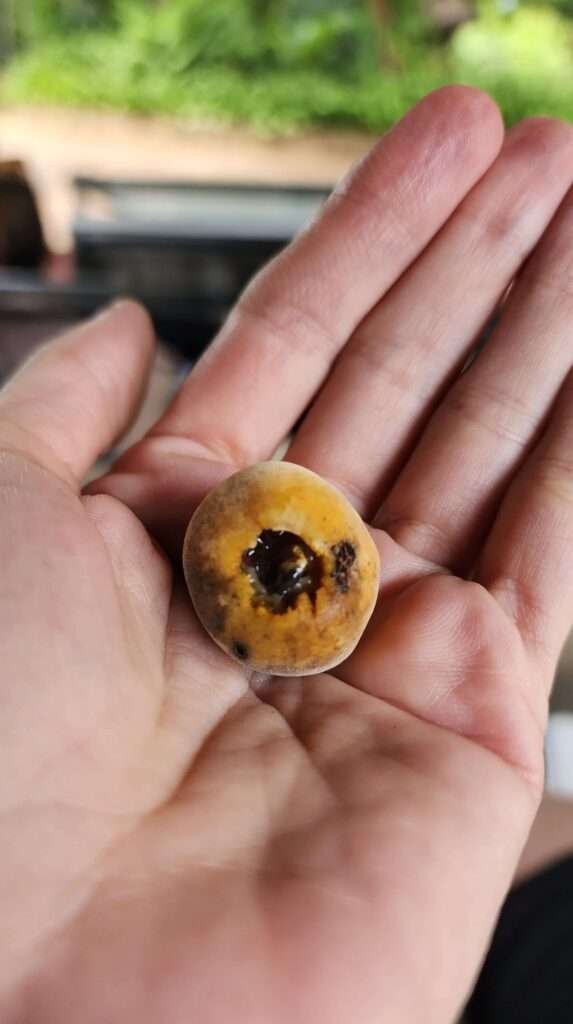
Nyala, a Native Southern Africa Antelope
On the way back, we caught sight of the lovely Nyala. With stripes resembling a kudu and a fluffy tail like a bushbuck, it’s easy to mistake it for a mix of the two. Yet, Nyalas are their own unique species. Our guide shared that “Nyala” comes from the Xhosa language, meaning ‘disgrace.’ However, watching it move gracefully in the wild, there was nothing disgraceful about it. In fact, it was quite beautiful in my opinion.
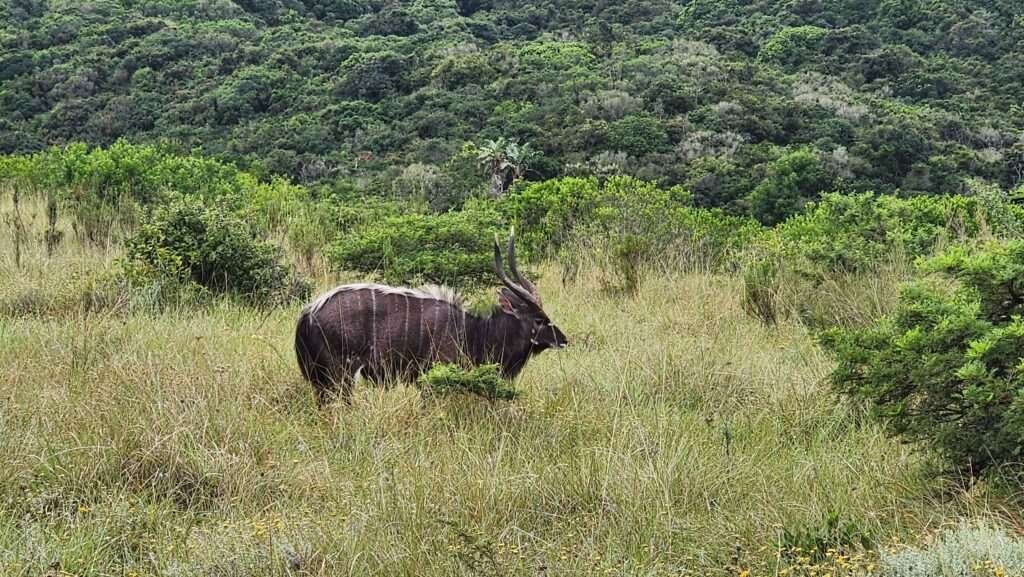
The female Nyala, known for their lighter coloration, is a beautiful little antelope with a shy nature.
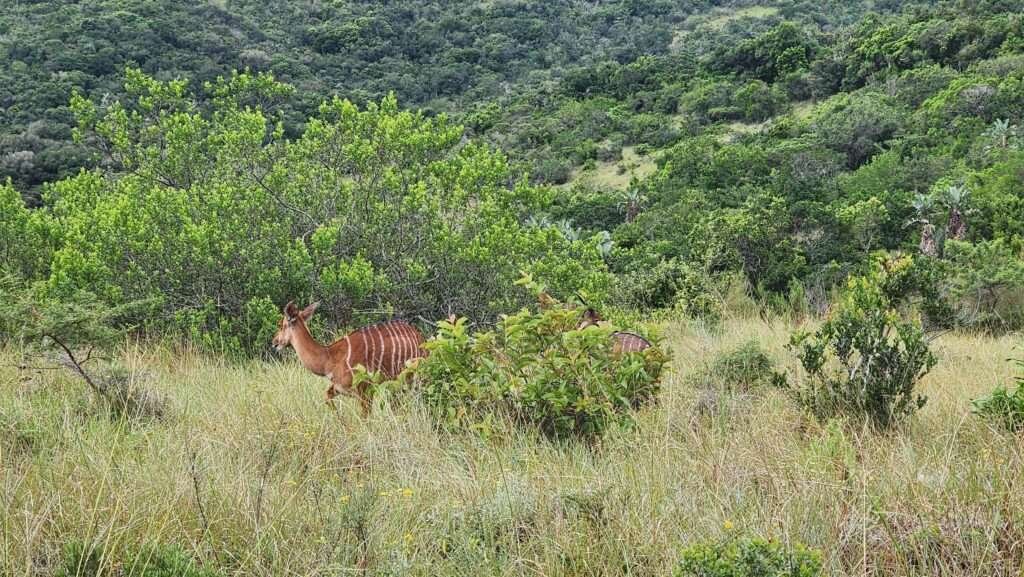
Duration and cost of the Umtiza Forest Walk
The Umtiza Forest Walk is excellent value at just R100 per person, with a duration of approximately one hour. This leisurely stroll is easy, making it an enjoyable experience even for children!
Contact Information & Reservation for the Umtiza Forest Walk
For reservations and enquiries, contact Inkwenkwezi at one of the following:
- Email: pgr@inkwenkwezi.co.za
- Telephone: +27 (043) 734 3234
Where to find the Umtiza Forest at Inkwenkwezi Reserve
- Address: Inkwenkwezi Private Game Reserve, Schafli Road, East Coast, East London
- To get accurate directions on Google Maps, click on this link.
Inkwenkwezi Restaurant: An Irresistable Sunday Buffet Spread
Inkwenkwezi Reserve: How to spend one day
Inkwenkwezi Game Drive: Explore the beauty of the reserve



